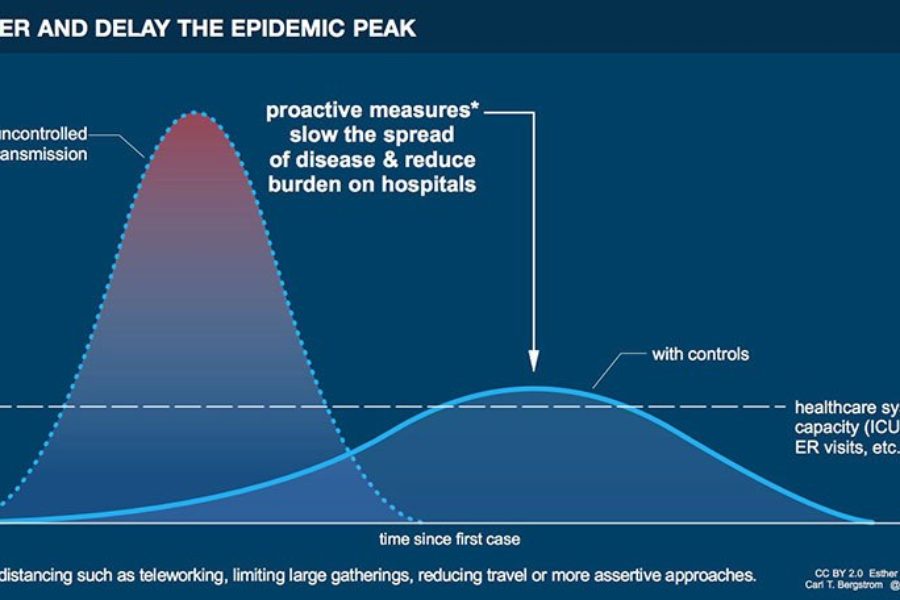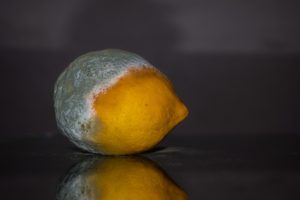In my previous post I discussed some basics to help #flattenthecurve. Today we are going to look at some nutrients that could potentially help when taken as a supplement.
Let’s get one thing out of the way from the start, in many cases a variety of studies have shown that using supplements helps but only so far as the supplement corrects a nutrient deficiency that existed but was sub-clinical (not yet bad enough to result in a disease state). This is an important consideration as there are upper limits of intake with many vitamins and minerals, as well as the variety of other nutrients being sold in supplemental form. One of the things I take great care to do with my clients, is to asses where they are nutritionally so that supplements can be tailored to individual needs. Typically that means helping to find the supplements that will have the greatest bang for your buck as supplement use can get expensive, especially as the number of them used rises.
Now that we got that out of the way let’s take a look at some common supplements being marketed right now to aid with immune function. Over the course of the next few days I will be posting more reviews of common supplements being used sold as helpful for COVID-19, but today we will focus on Vitamin C and D.
Vitamin C
One of the great benefits of Vitamin C is its ability to increase the bioavailability of iron.1,2 While this isn’t the whole picture, for those with a low iron intake, or those on vegan or vegetarian diets, Vitamin C intake via fruits and vegetables can help maximize absorption or iron, even making it better than heme-iron which comes from animal sources without the inflammation that comes with a diet centered around animal sources of iron or that may come from the heme-iron itself.3,4,5
When it comes to using Vitamin C for viruses such as the virus responsible for the common cold, or even the flu virus, the benefits seem to be modest at best. If there appears to be a large benefit, it’s most likely that Vitamin C intake in the diet was low. That being said, taking Vitamin C (around 500mg twice daily) before the onset of a cold may help somewhat. Taking Vitamin C after symptoms of an infection have already appeared is less conclusive as studies vary. Time will tell, but it may be that like so many other nutrients, the synergy of health promoting compounds in whole foods (fiber, antioxidants, as well as other vitamins and minerals) is better than taking supplemental forms. So, if you have to choose between purchasing whole foods or an expensive Vitamin C supplement, opt for the whole foods. In addition to the potential benefit, one adverse side effect is that high doses of Vitamin C may induce diarrhea. This is most common with supplements but as anyone who has eaten over 10 servings (think 10 apples or 10 oranges, etc., this is no where near the 2-3 servings a day recommended for most people) of raw fruit a day can tell you, it can happen with whole foods as well. Another potential adverse side effect includes increased risk of kidney stones in men when taking doses higher than 1000mg per day.6,7 If you have a history of kidney stones, limit intake of Vitamin C from supplements to no more than 250mg per day.8
Currently Vitamin C taken intravenously is being considered as a potential treatment for COVID-19 but time will tell if this will actually prove to be beneficial. If your diet is rich in processed, refined, or fast foods, then there is a good chance that you may have deficient daily intake of Vitamin C. If this is the case, then a supplement may help more than it would for someone who is already healthy and eats plenty of whole fruits and vegetables.
Vitamin D
Vitamin D, or the sunshine vitamin, as many in the health industry often call it. Truth is, while it is a Vitamin because it is vital to our body’s functioning, this nutrient is actually a hormone. Like Vitamin C, Vitamin D may potentially help people reduce the risk of infections of the respiratory tract from viruses like the flu. However, the details matter as the research seems to show that this benefit from moderate doses, is primarily found when used in people who are deficient in Vitamin D. I practice nutrition in Seattle, and many in the PNW already know how important Vitamin D is for mental health. Since so many in the region are already taking high doses of Vitamin D to counter the lack of sunshine, increased levels may not provide much benefit for those who are already taking a supplement. Generally speaking, unless using blood work to monitor the dose, stick to no more than 2,000IUs of Vitamin D3 daily. That being said, a meta-analysis of 25 studies of Vitamin D for the cold or flu supports the idea that Vitamin D can be helpful for viral infections when deficient and when the dose was daily or weekly rather than a single mega large dose taken monthly.9
Large doses of Vitamin D have a variety of side effects which can be extremely serious but typically have to do with how large doses can lead to hypercalcemia (the state of excess calcium in the blood which, over time, can contribute to hardened arteries) and the side effects related to hypercalcemia such as constipation, irritability, confusion, weakness, metallic taste in the mouth, calcium deposits, and kidney failure).10 One of those potential side effects is actually an increased risk of respiratory infections in people taking large doses of Vitamin D (100,000IU) verses taking a daily dose that is lower.11,12
While a person can get some Vitamin D from fortified food products, it’s my professional opinion that these are barely enough to get people where they need to be, while also containing lots of saturated fat that can be inflammatory (think dairy). While sunshine can help make up the difference, all the time we spend in our offices and home normally (and even more so now with more and more people staying indoors to slow the spread of the disease) means we typically don’t get enough sunshine. Combine that issue with our PNW overcast skies for most of the fall and winter, and you can quickly see how many in the area are deficient of Vitamin D.
In my next blog post I will be continuing with my discussion on supplements for COVID-19, this time with a discussion on zinc, and the spice turmeric.
Update as of 3/31/2020:
There have been a variety of news articles such as this one from the New York Post which discuss hospitals using Vitamin C for those with COVID-19. In these cases physicians are using them intravenously at intakes of 1500mg three to four times daily. These anecdotes seem to indicate that those receiving the intravenous Vitamin C seem to do better than those who don’t. It’s important to note that everything I discussed above still applies and taking Vitamin C at these doses orally can lead to serious gastrointestinal events that can actually make things worse. What often gets left out till you get to the bottom of these articles is that Vitamin C in these doses is being used in a specific way to treat sepsis. Sepsis may occur in those who have a major reaction to infection and the condition can quickly use up Vitamin C in the body. We still don’t know to what extent Vitamin C taken orally will help those who are only marginally ill from COVID-19 or if it will help prevent the worst symptoms from appearing. Either way, a person who minimizes symptoms using any of the vitamins, minerals, or herbs in this series should know that minimizing symptoms doesn’t minimize transmissibility of the virus. Someone can be managing symptoms and still pass the virus to others and so feeling well after getting sick is not a green light to start ignoring social distancing rules in effect.
References:
1. Hurrell, R., & Egli, I. (2010). Iron bioavailability and dietary reference values. The American Journal of Clinical Nutrition, 91(5), 1461S–1467S. doi:10.3945/ajcn.2010.28674f
2. Hallberg, L., & Hulthén, L. (2000). Prediction of dietary iron absorption: an algorithm for calculating absorption and bioavailability of dietary iron. The American Journal of Clinical Nutrition, 71(5), 1147–1160. doi:10.1093/ajcn/71.5.1147
3. Qi, L., van Dam, R. M., Rexrode, K., & Hu, F. B. (2006). Heme Iron From Diet as a Risk Factor for Coronary Heart Disease in Women With Type 2 Diabetes. Diabetes Care, 30(1), 101–106. doi:10.2337/dc06-1686
4. Yang, W., et al. (2013). Is heme iron intake associated with risk of coronary heart disease? A meta-analysis of prospective studies. European Journal of Nutrition, 53(2), 395–400. doi:10.1007/s00394-013-0535-5
5. Fonseca-Nunes, A., Jakszyn, P., & Agudo, A. (2013). Iron and Cancer Risk–A Systematic Review and Meta-analysis of the Epidemiological Evidence. Cancer Epidemiology Biomarkers & Prevention, 23(1), 12–31. doi:10.1158/1055-9965.epi-13-0733
6. Thomas, L. D. K., et al. (2013). Ascorbic Acid Supplements and Kidney Stone Incidence Among Men: A Prospective Study. JAMA Internal Medicine, 173(5), 386. doi:10.1001/jamainternmed.2013.2296
7. Taylor, E. N. (2004). Dietary Factors and the Risk of Incident Kidney Stones in Men: New Insights after 14 Years of Follow-up. Journal of the American Society of Nephrology, 15(12), 3225–3232. doi:10.1097/01.asn.0000146012.44570.20
8. Massey, L. K. (2003). Dietary influences on urinary oxalate and risk of kidney stones. Frontiers in Bioscience, 8(6), s584–594. doi:10.2741/1082
9. Martineau, A. R., et al. (2017). Vitamin D supplementation to prevent acute respiratory tract infections: systematic review and meta-analysis of individual participant data. BMJ, i6583. doi:10.1136/bmj.i6583
10. Bohon, T. M., & Goolsby, M. A. (2013). The Role of Vitamin D Supplements in Women’s Health. Clinical medicine insights. Women’s health, 6, 67–70. https://doi.org/10.4137/CMWH.S11067
11. Denlinger, L. C., et al. (2016). Vitamin D Supplementation and the Risk of Colds in Patients with Asthma. American Journal of Respiratory and Critical Care Medicine, 193(6), 634–641. doi:10.1164/rccm.201506-1169oc
12. Martineau, A. R., et al. (2015). Double-blind randomized controlled trial of vitamin D3supplementation for the prevention of acute respiratory infection in older adults and their carers (ViDiFlu). Thorax, 70(10), 953–960. doi:10.1136/thoraxjnl-2015-206996







